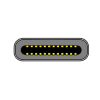Charging Technology Speed Performance Benchmarking
Chargers and Power Banks
Headphone & Speakers
Cases & Covers
Virtual Reality
Cables & Adapters
Media Player
Laptop
Tablet
Desktop
Cell Phone
Printers & Copiers
Memory Cards
TV
Computer Display
Game Console
Smart Home
Wearable Technology
Photo & Video Camera
Car Electronics
Car
Networking Equipment
Smart Toys
Home Audio & Video
Professional & Industrial
Storage Drive
Docking Station
Game Console Controllers
Set-top box
Keyboard, Mice, & Stylus
Portable Music Player
Computer Parts & Components
Cordless & Speakerphones
Projector
Software
Reporting
USB-C PD 2.0 Vehicle Charger
by Verizon







Interested in this product?
Charge Your USB Type-C Device Quickly While Driving with the Verizon USB-C PD 2.0 Vehicle Charger with USB Power Delivery

The USB-C PD 2.0 Vehicle Charger was sold by Verizon as a newer version of the Verizon Vehicle Charger with Fast Charge Technology which closely resembles each other. Rather than supporting both USB Power Delivery and Qualcomm Quick Charge 3.0 technology like its predecessor, the Verizon USB-C PD 2.0 Vehicle Charger only provides USB Power Delivery 2.0 based charging over USB Type-C.
While the previous charger offers up to 30 watts charging, the Verizon USB-C PD 2.0 Vehicle Charger only allows max 27 watts output through USB Power Delivery using 15 watts (5 volts @ 3 amps) and 27 watts (9 volts @ 3 amps) power profiles.

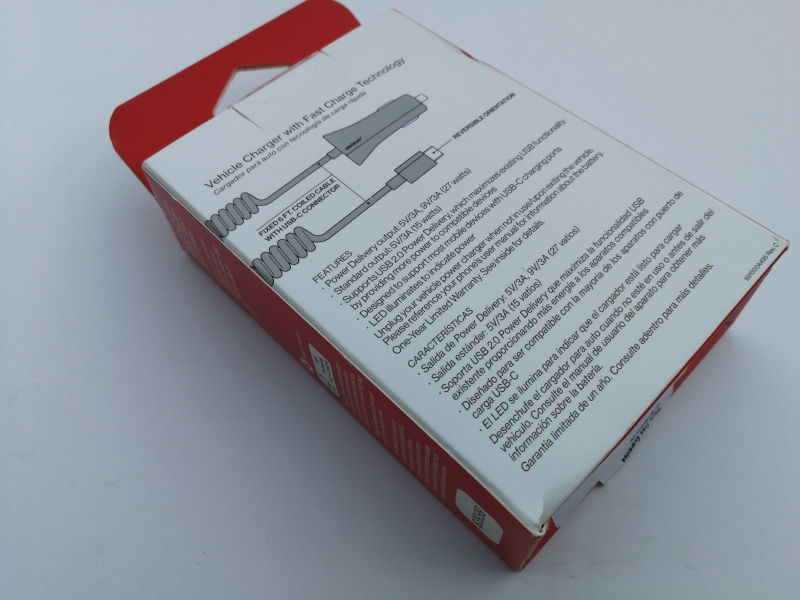


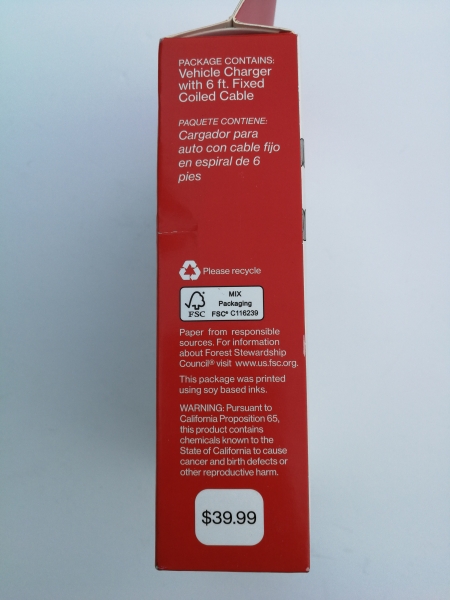
The same pricing still applies for the Verizon USB-C PD 2.0 Vehicle Charger since we last purchased the Verizon Vehicle Charger with Fast Charge Technology some time ago (see this review). The newer charger also has the same affixed coiled USB Type-C cable connector that is also USB PD 2.0 certified to connect to Type-C devices for quick charge up inside the car.
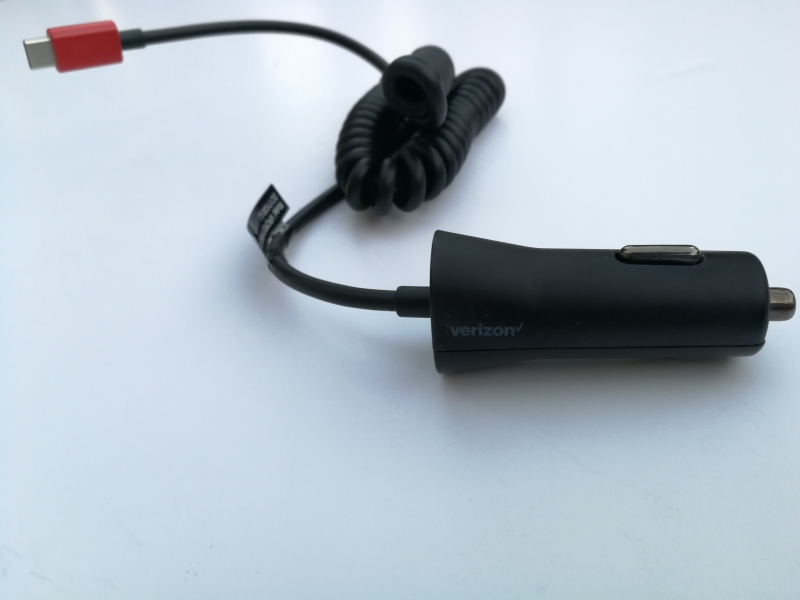
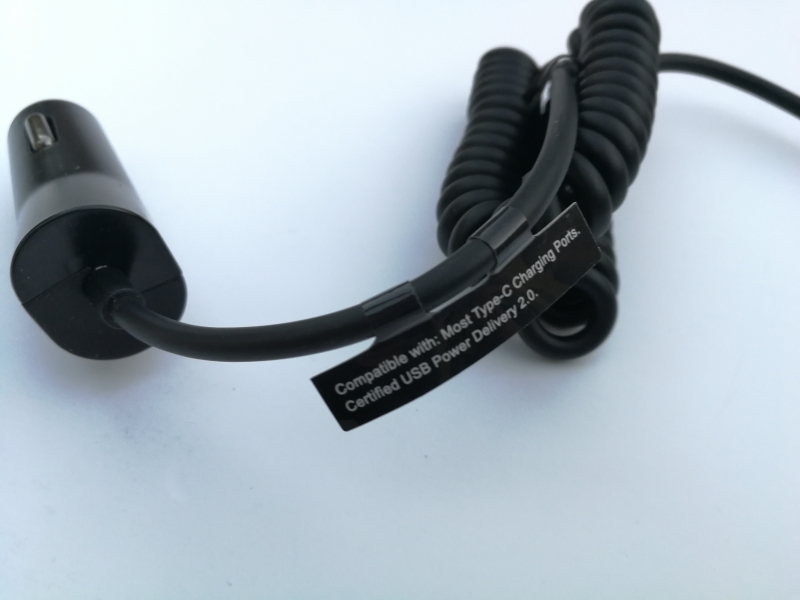

Using the USB Power Test App from Granite River Labs with the Granite River Labs USB Power Delivery Compliance C2 Tester, we performed the following tests for the Verizon USB-C PD 2.0 Vehicle Charger.
The USB Power Test App first negotiates a power contract for every PDO supported by the Verizon charger, and increases the load gradually to find the threshold where over current protection (OCP) kicks in and voltage and current start to drop for safety reasons. However the charger is not able to recover from 5V PDO OCP where the charger was observed to drop VBUS voltage to 5V when reaching 9V PDO OCP without dropping current or renegotiating PD contract.
The USB Power Test App reports out all the PDO's supported by the Verizon charger and their OCP thresholds. OCP thresholds for the Verizon charger are set at about 15-20% above the maximum current levels for the fixed PDO's.
| PDO | OCP (A) |
|---|---|
| PDO#1 Fixed: 5V 3A | 3.63 |
| PDO#2 Fixed: 9V 3A | 3.46 |
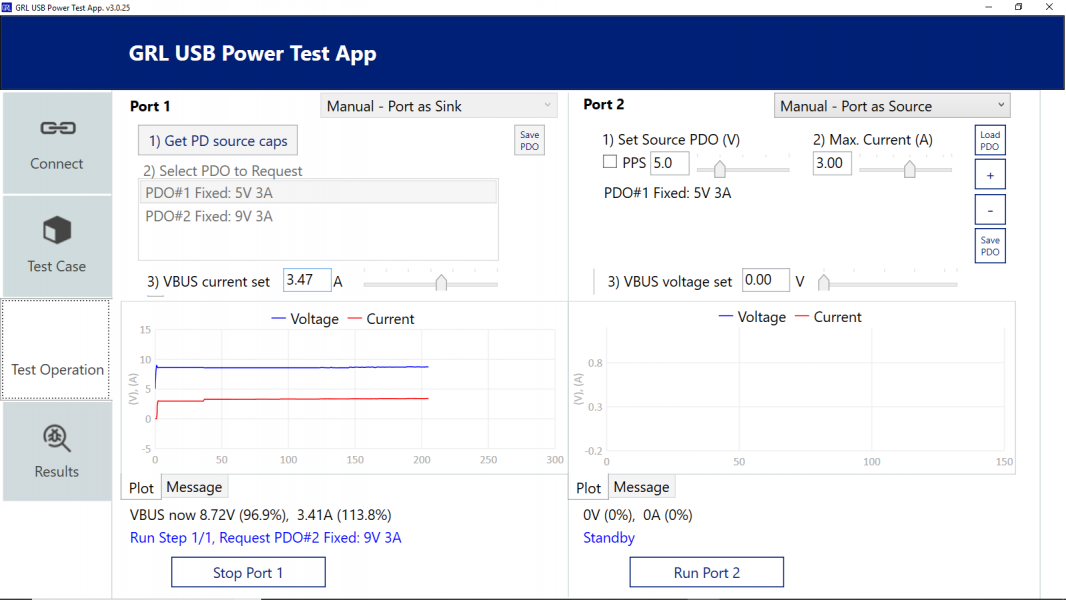
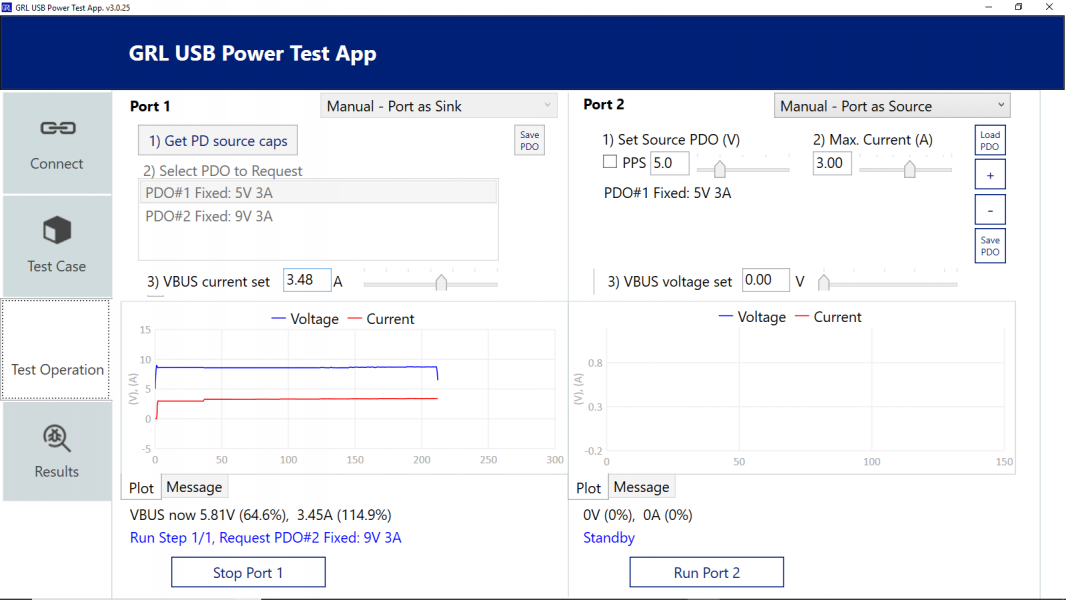
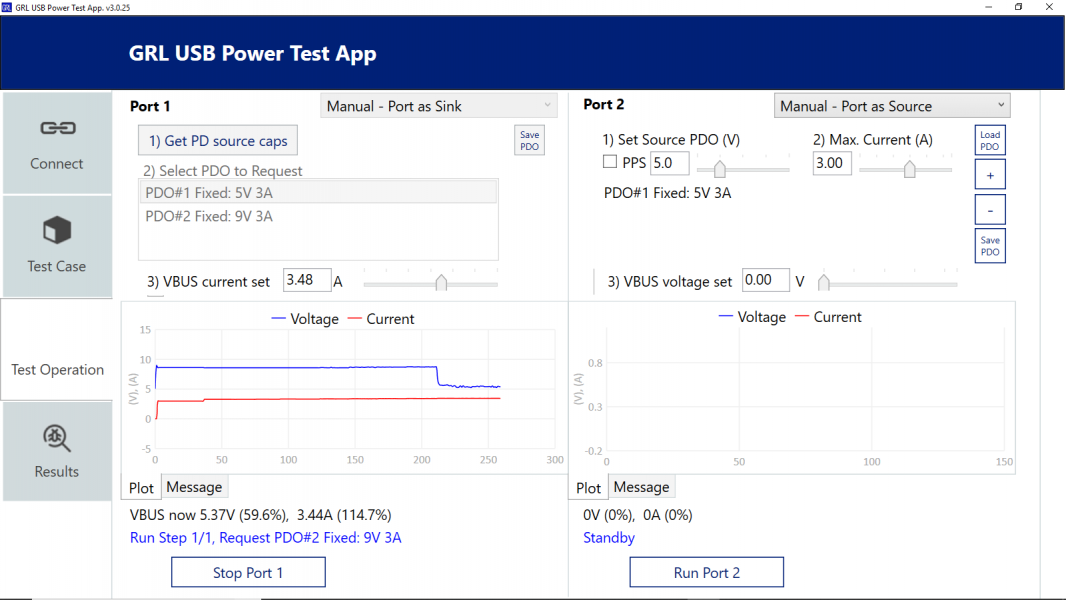
The USB Power Test App from Granite River Labs takes this data to produce an I-V curve which graphically shows the relationship between voltage and current for each PDO. We can observe after the current increases beyond the 5V PDO OCP threshold, the voltage just drops to 5V from 9V PDO OCP threshold without dropping current.
Using the USB Power Delivery Compliance C2 Tester from Granite River Labs to run just a subset of the full USB Power Delivery compliance test suite, some compliance failures were observed for the Verizon USB-C PD 2.0 Vehicle Charger.
USB-IF High Level Mapping Summary
Sl No
|
Test Category
|
Test Group Description
|
Test Result
|
|---|---|---|---|
1
|
PHY_PRIMARY_TX
|
BMC Physical Layer Transmitter
|
PASS
|
2
|
PHY_PRIMARY_RX
|
BMC Physical Layer Receiver
|
PASS
|
3
|
PHY_PRIMARY_MISC
|
BMC Physical Layer Miscellaneous
|
PASS
|
4
|
PROT_PRIMARY
|
Protocol Specific Primary
|
FAIL
|
5
|
POWER_PRIMARY
|
Power Source/Sink Primary
|
Pass
|
Result Summary
Sl No
|
Test ID
|
Test Name
|
Test Result
|
|---|---|---|---|
1
|
TDA.2.1.1.1
|
TDA.2.1.1.1 BMC PHY TX EYE
|
PASS
|
2
|
TDA.2.1.1.2
|
TDA.2.1.1.2 BMC PHY TX BIT
|
PASS
|
3
|
TDA.2.1.2.2
|
TDA.2.1.2.2 BMC PHY RX INT REJ
|
PASS
|
4
|
TDA.2.1.2.1
|
TDA.2.1.2.1 BMC PHY RX BUSIDL
|
PASS
|
5
|
TDA.2.1.3.1
|
TDA.2.1.3.1 BMC PHY TERM
|
PASS
|
7
|
TDA.2.2.1
|
TDA.2.2.1 BMC PROT SEQ GETCAPS
|
PASS
|
8
|
TDA.2.2.3
|
TDA.2.2.3 BMC PROT SEQ DRSWAP
|
FAIL
|
9
|
TDA.2.2.4
|
TDA.2.2.4 BMC PROT SEQ VCSWAP DFP
|
PASS
|
10
|
TDA.2.2.6
|
TDA.2.2.6 BMC PROT SEQ PRSWAP
|
PASS
|
11
|
TDA.2.2.7
|
TDA.2.2.7 BMC PROT BIST NOT 5V SRC
|
PASS
|
12
|
TDA.2.2.8
|
TDA.2.2.8 BMC PROT REV NUM
|
PASS
|
13
|
TDA.2.2.9
|
TDA.2.2.9 BMC PROT GSC REC
|
FAIL
|
14
|
TDA.2.3.1.1
|
TDA.2.3.1.1 POW SRC LOAD P PC
|
PASS
|
15
|
TDA.2.3.2.1
|
TDA.2.3.2.1 POW SRC TRANS P PC
|
PASS
|
BMC Eye Diagram
We can also see from the load trace below captured using the GRL-USB-PD C2 Compliance Test Solution App that shows the Verizon USB-C PD 2.0 Vehicle Charger also supports different voltage and current levels for charging.

View Full Article
USB PD Charging Technologies & Battery Life Benchmarking
Featured Products
 GTrusted
GTrusted






